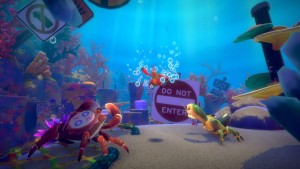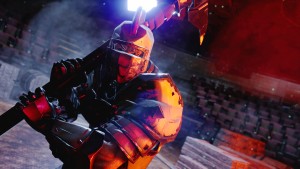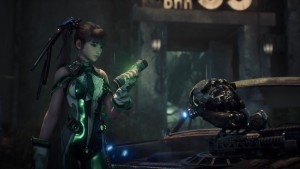Please support Game Informer. Print magazine subscriptions are less than $2 per issue

Assassin’s Creed Rogue is a safe bet. Whether you’re the developers who put
it together, or the gamer who plays it, Rogue offers a tried-and-true experience with few gameplay surprises. By embracing established mechanics and gameplay systems, the closing chapter of the America saga regularly feels like a retread. Fortunately, with much of the groundwork already in place, the developers have been able to focus on content creation, and Rogue is one of the biggest and most varied titles in the franchise to date.
The story of Shay Cormac has overtones of Greek tragedy, focusing on an assassin’s change of heart and the devastation to his previous brotherhood that ensues. The story is at times compelling, but caught in a strange gray space between an unexpected path into villainy (à la Anakin Skywalker) and a more sympathetic vision of the Templars as potential good guys – an interpretation that has never really worked for me. Regardless, there’s no denying the fun of experiencing the other side of the conflict; I love the constant disquiet I felt at murdering the very figures I’ve spent seven years trying to aid to victory.
The metastory of Abstergo Entertainment and your unwitting part in its machinations continues to struggle to find footing. Wandering an office building and hacking computers lacks the tension and narrative drive of the series’ earliest entries, and I’m hopeful that the overarching fiction can diverge into more provocative fare sometime soon.
The core gameplay draws heavily from many of the best features in Assassin’s Creed III and Black Flag, and even earlier installments like Brotherhood. Sailing through the iceberg-laden ocean of the North Atlantic brings more open-sea ship combat, and the exploration of beached shipwrecks left behind by unfortunate explorers. The alpine forests of the Hudson River Valley are home to settlements to control and wilderness to discover. And the urban streets of New York provide gang headquarters to conquer and buildings to renovate. The variety of activities is vast, even without many fundamentally new experiences.
The side activities are all tapped through the course of the central campaign, and by mixing things up, Rogue avoids some of the pitfalls of other franchise entries. I rarely felt like I was doing the same thing over and over again. If one mission offered a chase through the forest, the next might be a ship battle, and the one after that would be a fort infiltration.
These time-tested experiences are bolstered by a number of collectibles, including Viking sword fragments, Templar maps, and prosperity gems whose sole purpose is to boost the value of other rewards. Ubisoft also brings back the fleet combat minigame, which now plots Shay’s involvement in the Seven Years’ War. I was regularly pulled away from the core story missions into an engaging platforming challenge through the trees, or a quest to track down just a few more lost war letters. While the story setup differs, it’s striking that many features are lifted wholesale from older games, from a bunch of the same sea shanties to a virtually identical fleet deployment map. Even so, these familiar and interconnected systems all perform well, and kept me busy for hours of upgrading and outfitting.
The melee combat also remains largely unchanged. Furious sword and pistol duels are still fun, but the system is beginning to show its age, especially in the light of other franchises that have begun to improve on the rhythm-based formula. After multiple games using the same moves and similar animations, the counters and strikes lack some of their previous punch.
The few new gameplay features don’t show up until a few hours into the campaign, but they add some meaningful diversions. My favorite additions involve turning the tables on the established conventions of Assassins hunting Templars. As fun as it is to hunt down an enemy of the Brotherhood, there’s something equally engaging about thwarting those hidden foes before they take down an ally. Similarly, I like the sense of danger that comes once you become a target. Any bush or sloping rooftop might hide a hidden blade aimed at your heart, unless you remain wary for the telltale whispers of an approaching killer.
Rogue is vast with lots to explore, and while it lacks novelty, it offers a wealth of gameplay and lore to faithful fans. The absence of the dedicated multiplayer mode is a bummer, but you can’t fault the game for lacking things to do.
For players trying to figure out which game to tackle first when two Assassin’s Creed games release on the same day this year, the answer is to start here. Shay’s story closes a number of story loops left behind on the American front of the Templar/Assassin conflict, and offers a crucial first step into the new European theater of war. Rogue proves why it’s time for the franchise to chart some new territory, but leaves no doubt about why we fell in love in the first place.











